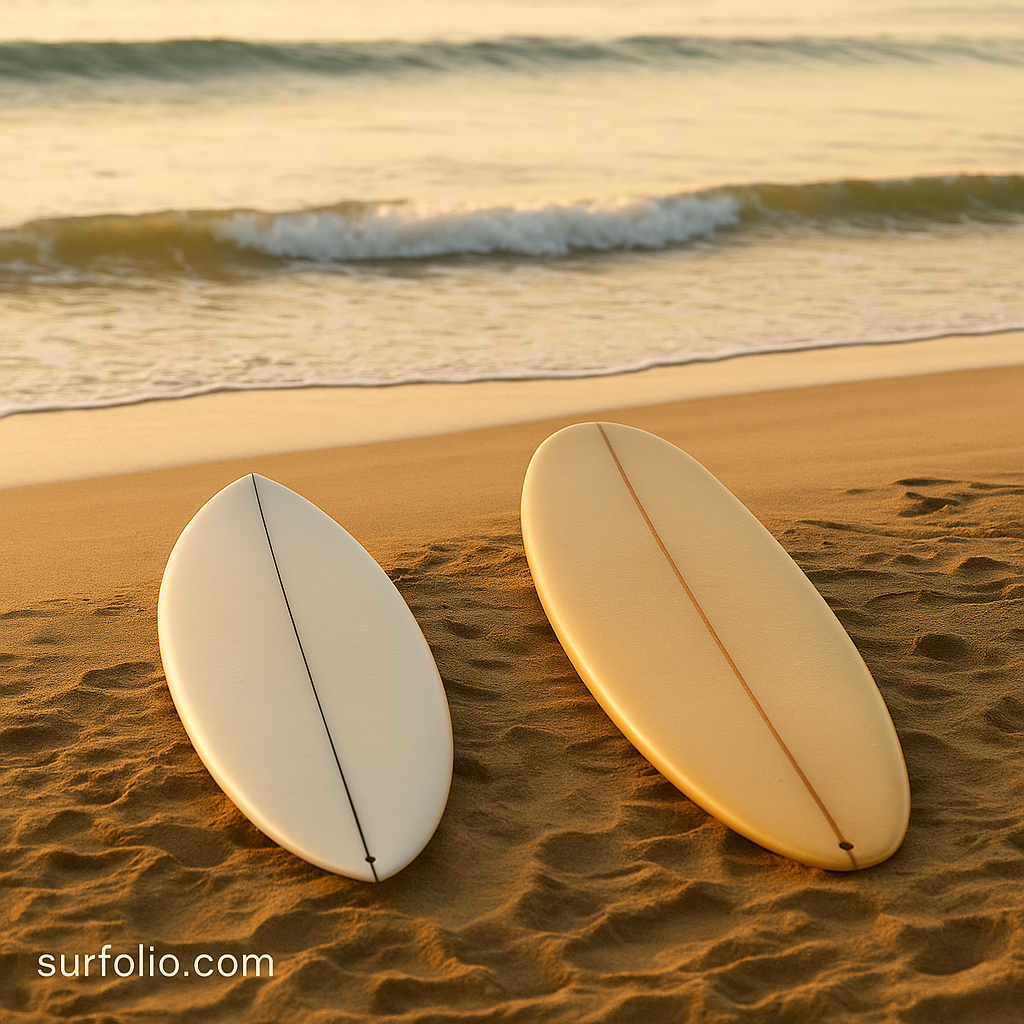
Why the Board You Ride Matters
The surfboard you choose shapes your entire experience in the water. Whether you want to glide effortlessly or carve powerful turns, your board determines how you connect with the wave. The shortboard vs longboard debate has been around for decades — and the truth is, both have their magic.
Choosing between them comes down to your skill level, wave type, and surf style.
The Shortboard: Speed, Power, and Precision
The shortboard is the weapon of choice for high-performance surfers. It’s designed for maneuverability, speed, and sharp turns on steeper waves.
Defining Features
- Length: Typically 5’6” to 6’6”
- Nose: Pointed for fast paddling and steep drops
- Tail: Squash, round, or pin for responsive control
- Fins: Usually a thruster (3-fin) setup for balance and grip
Pros
- Excellent for powerful, hollow waves
- Allows advanced tricks and vertical maneuvers
- Quick to duck dive under oncoming waves
Cons
- Harder to paddle — requires strength and skill
- Less stable for beginners
- Short rides on smaller waves
Best For: Intermediate to advanced surfers who love power surfing, cutbacks, and aerials.
The Longboard: Flow, Style, and Grace
Longboards are where surfing began — smooth, timeless, and effortlessly stylish. They’re made for gliding and connecting with the wave rather than attacking it.
Defining Features
- Length: 8’0” to 10’0”
- Nose: Rounded for better paddling and stability
- Tail: Wider, often with a single fin setup
- Rails: Softer and more forgiving
Pros
- Easy to paddle and catch waves early
- Perfect for small, gentle surf
- Ideal for nose riding and cross-stepping
- Encourages relaxed, classic style
Cons
- Harder to control in steep or powerful waves
- Not ideal for quick turns or big tricks
- Difficult to duck dive through whitewater
Best For: Beginners to advanced surfers who love smooth rides, classic style, and mellow sessions.
Key Differences at a Glance
| Feature | Shortboard | Longboard |
|---|---|---|
| Length | 5’6″–6’6″ | 8’0″–10’0″ |
| Style | Fast, dynamic | Smooth, classic |
| Best Waves | Steep and powerful | Small to medium, mellow |
| Skill Level | Intermediate–Advanced | Beginner–Advanced |
| Paddling | Requires strength | Easy and stable |
| Manoeuvrability | Quick turns, high performance | Fluid, relaxed flow |
| Ideal Vibe | Aggressive and technical | Stylish and soulful |
How to Choose What’s Right for You
Ask yourself what kind of surfer you want to be:
- Do you crave fast, punchy waves and tight turns? Go shortboard.
- Do you prefer long rides and stylish flow? Longboard all the way.
- Want a mix? Try a funboard or mid-length hybrid for the best of both worlds.
If you’re still learning, a longboard will help you develop better wave timing and control. Once you’ve built confidence, transitioning to a shortboard feels natural.
Pro Tip
Don’t limit yourself to one board forever. Most experienced surfers keep a quiver — a small collection of boards for different conditions. A shortboard for big, clean days and a longboard for mellow mornings gives you the best of both worlds.
Final Thoughts
Surfing isn’t about what’s “better” — it’s about what fits your rhythm. Shortboards bring energy and precision, while longboards bring calm and style. The right board is the one that matches your personality, local waves, and the kind of joy you want from the ocean.
Whether you carve or cruise, every board leads to the same truth: it’s all about the ride.
